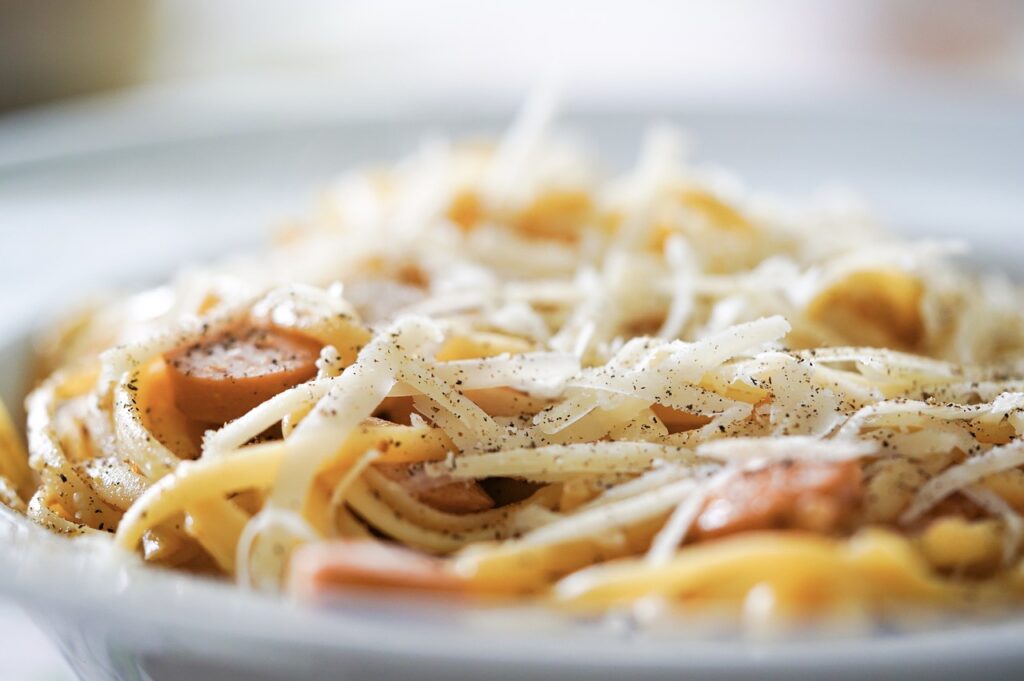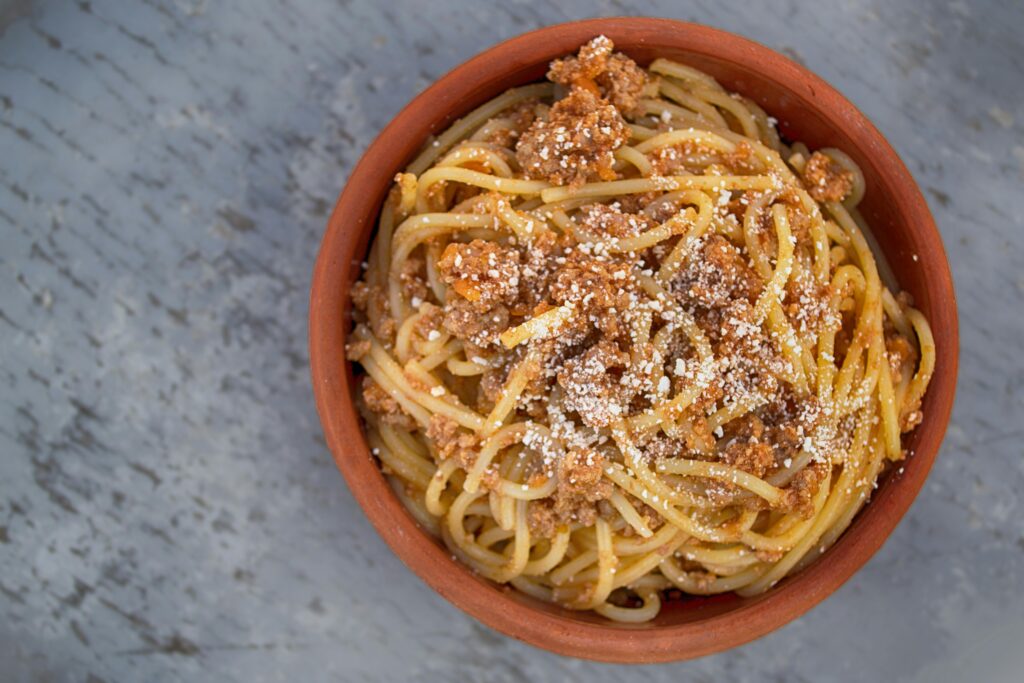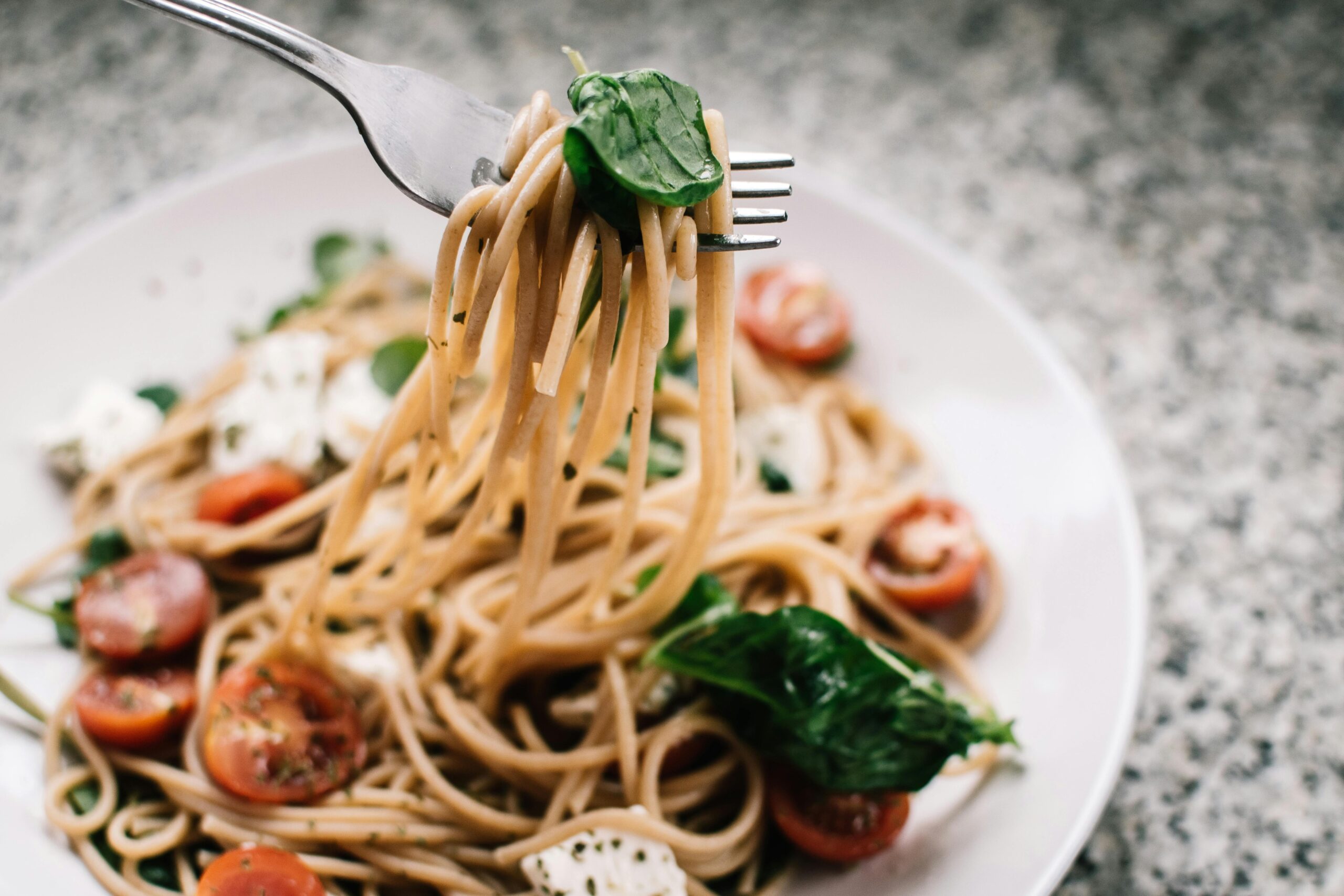Introduction:
This is a paragraph.
Research shows switching to whole grain pasta reduces calorie absorption by 30%. Try these filling yet slimming recipes.
Smart Pasta Selection
Let me share what I’ve learned about choosing pasta over my years of cooking and teaching nutrition classes. You know, I used to think pasta was just… well, pasta. Boy, was I wrong! After countless kitchen experiments and some pretty memorable cooking mishaps, I’ve figured out there’s actually a science to selecting the right noodles for both health and taste.
Remember my first attempt at whole grain pasta? I just dumped it in boiling water like regular pasta and ended up with a gummy mess that even my always-hungry golden retriever wouldn’t touch. But here’s the thing – whole grain pasta is absolutely worth mastering. It packs about 6 grams of fiber per serving compared to only 2 grams in white pasta, and that extra fiber helps keep you feeling full way longer.
Let’s talk portion sizes, because this was a real game-changer for me. A proper serving of dry pasta is about 2 ounces, which looks tiny in your hand but expands to about 1 cup cooked. I used to serve up enormous portions until I learned this trick: use a pasta measurer or the diameter of a quarter coin to portion dry spaghetti. Your blood sugar will thank you later!
Alternative noodles have completely revolutionized my pasta game. Chickpea pasta has become my go-to for meal prep because it packs a whopping 14 grams of protein per serving – that’s more than twice what you get from traditional wheat pasta! And don’t even get me started on red lentil pasta. It might look a bit different, but it’s got 13 grams of protein and actually holds its shape better than some other alternatives I’ve tried.
Here’s a calorie comparison that surprised even my nutrition students: while regular and whole grain pasta both have about 200 calories per 2-ounce serving, chickpea pasta often comes in slightly lower at around 190 calories. Not a huge difference, sure, but it’s those little things that add up when you’re watching your intake.
Want to know what really blew my mind? The protein content variations. Traditional white pasta has about 7 grams of protein per serving, whole grain bumps that up to 8 grams, but then you’ve got these powerhouse alternatives like edamame pasta with up to 24 grams of protein per serving! That’s basically like eating a chicken breast worth of protein in your pasta.
One thing I learned the hard way – always check the cooking times on alternative pastas. They often cook faster than traditional ones, and there’s nothing worse than mushy chickpea noodles (trust me on this one). I now set my timer for 2 minutes less than the package suggests and start testing from there. This little hack has saved countless meals from turning into an unappetizing mess.

Recipe Essentials
Let me tell you about my journey with pasta recipes that actually keep you satisfied and energized. After years of making the same old spaghetti and meatballs, I finally discovered how to transform basic pasta dishes into nutrient powerhouses that don’t leave you hungry an hour later.
My veggie-loaded marinara sauce started as a happy accident when I had too many garden vegetables about to go bad. Now it’s become my signature dish! I dice up 3 bell peppers, 2 carrots, 1 zucchini, and a whole package of mushrooms super fine – we’re talking tiny pieces that practically dissolve into the sauce. The secret is sautéing these veggies in olive oil until they’re really soft before adding your marinara. This not only adds tons of nutrients but also creates this incredibly rich, complex flavor that’ll make you forget about plain tomato sauce forever.
Speaking of transformations, let’s talk about protein-packed primavera. I used to make this really bland version until a chef friend showed me the light. The game-changer? Adding cubed tempeh or chicken (about 8 ounces) and edamame (1 cup) along with your typical primavera vegetables. The protein content jumps from about 8 grams to a whopping 25 grams per serving! Plus, I learned to blanch the veggies separately – it keeps their colors bright and prevents that mushy texture that used to drive me crazy.
Mediterranean zoodles were my gateway into the world of vegetable noodles. Trust me, my first attempt was a watery disaster – I didn’t know you needed to salt and drain zucchini noodles before cooking them. Now I know to let them sit with a sprinkle of salt for 20 minutes, then pat them dry really well. Top them with cherry tomatoes, kalamata olives, feta cheese, and a drizzle of good olive oil. The whole dish comes together in under 15 minutes and has only about 200 calories per serving.
Let’s discuss lentil pasta bowls because they’ve literally saved my weeknight dinner routine countless times. Here’s what I’ve learned: red lentil pasta holds its shape better than other legume pastas, and it pairs amazingly well with roasted vegetables. I toss together brussell sprouts, butternut squash, and red onions with olive oil and herbs, roast them at 400°F for 25 minutes, and serve them over the lentil pasta with a lemony tahini sauce. The whole dish packs about 22 grams of protein and 12 grams of fiber per serving!
My latest obsession has been experimenting with squash noodle dishes. After several failed attempts (and one slightly singed butternut squash), I’ve finally mastered the art of spiralizing different squash varieties. Spaghetti squash is obviously a classic, but have you tried delicata squash noodles? They’re sweeter and have this amazing texture that holds up really well in stir-fries. Just make sure to remove the seeds before spiralizing, and don’t overcook them – 3-4 minutes in a hot pan is usually perfect.
One common thread I’ve discovered through all these recipe adventures is that the sauce can make or break your dish. I used to rely on store-bought sauces until I realized how much sodium and sugar they contain. Now I make simple sauces using vegetable or chicken broth as a base, thickened with a little cornstarch slurry (1 tablespoon cornstarch mixed with 2 tablespoons cold water), and flavored with fresh herbs and garlic. This approach has cut the calorie content of my sauces by more than half while actually improving the taste!
Portion Control
Let me share what I’ve discovered about portion control after years of teaching nutrition and making every mistake in the book. Getting portions right isn’t just about using smaller plates – though I’ll admit that trick actually helped me quite a bit when I was starting out!
I remember being absolutely floored when I first measured out what an actual serving of pasta looks like. Two ounces of dry pasta – about the diameter of a quarter – cooks up to roughly one cup. That’s it! For years, I’d been serving myself portions three times that size and wondering why I felt so sluggish afterward. Now I know that a proper serving should only take up about ¼ of your plate, leaving plenty of room for vegetables and protein.
Speaking of timing, I learned the hard way that when you eat your pasta matters almost as much as how much you eat. Having a huge plate of fettuccine alfredo right before bed? Been there, regretted that! I’ve found that pasta dishes work best as lunch or early dinner meals, ideally 3-4 hours before bedtime. Your body has time to process those carbohydrates, and you’ll actually have energy when you need it during the day.
Let’s talk about combination ratios because this was a total game-changer for me. The ideal plate should be about 50% vegetables, 25% protein, and 25% pasta. It took some getting used to – I mean, who doesn’t love a giant bowl of just pasta? But this ratio keeps your blood sugar stable and helps prevent that dreaded afternoon crash. I measure it visually now, but at first, I actually used a divided plate to keep myself honest.
When it comes to weekly limits, I’ve found that 2-3 pasta meals per week is the sweet spot for most people. More than that, and you might be missing out on other important grains like quinoa or brown rice. I keep track using my meal planning calendar – it helps prevent the “oh no, I’ve had spaghetti three nights in a row” situation we’ve probably all experienced!
Here are some measurement tips that transformed my portion control game. First, invest in a food scale – they’re cheap and incredibly useful. But if you don’t have one, here are some visual cues I teach my students: a serving of cooked pasta should be about the size of your fist, a portion of protein should match the size of your palm, and vegetables should fill up both your hands cupped together.
One mistake I kept making was forgetting to account for sauce in my portions. A proper serving of sauce is about ½ cup, but it’s so easy to go overboard! I started using a ladle that holds exactly that amount – no more eyeballing and ending up with soup! This simple change cut unnecessary calories from my meals while still keeping them satisfying.
The real breakthrough came when I started preparing individual portions right after cooking. Instead of leaving a huge pot of pasta on the stove (hello, tempting seconds!), I measure out proper portions into containers right away. Any leftovers go straight into the fridge, which not only helps with portion control but also makes meal prep for the week so much easier.
Remember, portion control isn’t about depriving yourself – it’s about finding the right amount that makes you feel energized and satisfied. Once you nail these measurements, you’ll probably notice you enjoy your pasta meals even more because you’re not dealing with that heavy, overstuffed feeling afterward.
Common Mistakes
Let me share some hard lessons I’ve learned about pasta preparation over the years. Trust me, I’ve made every mistake possible in my kitchen, and these experiences have taught me exactly what not to do – and more importantly, how to fix these common issues.
Remember when I used to dump an entire jar of sauce over a pound of pasta? Huge mistake! Through trial and error (and some very soupy dishes), I’ve learned that 1/2 cup of sauce per cup of cooked pasta is the magic ratio. Here’s a pro tip I wish I’d known earlier: reserve about 1/4 cup of pasta water before draining. That starchy water helps the sauce stick to your noodles instead of pooling at the bottom of your plate.
Speaking of portions – oh boy, this was a big one for me. I used to eyeball my pasta servings and wonder why I felt so sluggish afterward. The correct portion of dry pasta is about 2 ounces, which looks tiny but expands to a cup when cooked. I now use a kitchen scale or pasta measurer, and it’s completely changed my relationship with pasta dishes. The right portion leaves you satisfied, not stuffed.
Let’s talk about cooking methods because I learned these lessons the hard way. You know what happens when you add pasta to cold water and then bring it to a boil? You get mushy, gummy pasta that sticks together like glue. Been there, done that! Always start with rapidly boiling water, and for the love of good food, don’t forget to salt it – it should taste like sea water. I use about 1 tablespoon of salt per pound of pasta.
Storage issues nearly ruined my meal prep game until I figured out some crucial tips. Never, ever store pasta without tossing it in a tiny bit of olive oil first – about 1 teaspoon per pound of pasta. I used to skip this step and end up with one giant pasta block in my container. Also, those airtight containers aren’t just for show – they prevent your pasta from absorbing weird fridge smells (learned that one after my spaghetti started tasting like leftover garlic bread).
The reheating situation was probably my biggest source of frustration. Microwaving pasta until it’s hot and dry as cardboard? Yeah, I don’t do that anymore. Instead, I add a splash of water (about 1 tablespoon per cup of pasta) before microwaving, and I heat it in 30-second intervals, stirring between each. For cream-based sauces, I use a splash of milk instead of water. This keeps the pasta moist and prevents that rubbery texture we’ve all experienced.
One mistake that took me way too long to correct was overcooking pasta for cold dishes like pasta salad. If you’re planning to serve it cold, you need to cook it even more al dente than usual – about a minute less than the package suggests. Otherwise, you’ll end up with soft, mushy pasta that falls apart when you toss it with other ingredients. Plus, always rinse it with cold water immediately after cooking to stop the cooking process.
The biggest revelation came when I finally understood how different pasta shapes work with different sauces. Using angel hair with chunky meat sauce? That’s a recipe for disappointment. Thin, delicate pastas need light, smooth sauces, while tubular and ridged pastas can handle heartier, chunkier sauces. This simple principle has transformed my pasta game from amateur to pretty darn impressive, if I do say so myself!

Meal Prep Strategies
I’ve spent years perfecting my pasta meal prep game, and let me tell you, it wasn’t always pretty. Those first few attempts at batch cooking? Let’s just say my family got really tired of eating mushy pasta for days straight. But now I’ve got it down to a science, and I’m excited to share what really works.
Let’s talk batch cooking, because this changed everything for me. The key is to slightly undercook your pasta – about 2 minutes less than al dente. Trust me on this one! I cook 2-3 pounds of pasta at once, but here’s the crucial part: after draining, I immediately spread it on lightly oiled baking sheets to cool. This prevents that dreaded clumping that used to drive me crazy. For sauces, I make double batches and store them separately – about 1/2 cup per serving is perfect.
Storage solutions were a game of trial and error until I found what works. Glass containers are worth every penny for pasta storage. They don’t stain like plastic (learned that the hard way with tomato sauce!), and they keep pasta fresher longer. I portion everything into 1-cup servings, but here’s my secret: I leave a little space at the top of each container and add a small piece of parchment paper before closing. This absorbs any excess moisture and prevents that weird condensation that can make your pasta soggy.
When it comes to reheating, I discovered a method that actually works. For regular pasta, add a splash of water (about 1 tablespoon per cup) before microwaving in 30-second intervals, stirring between each. For cream-based sauces, use a splash of milk instead. But here’s what really revolutionized my reheating game: keeping sauces separate until serving time. This way, you can reheat them properly – pasta needs less time than sauce, and mixing them too early can lead to mushiness.
Weekly planning makes all the difference. I dedicate Sunday afternoons to prep, and I’ve learned to rotate between different types of pasta and sauces to prevent boredom. I plan for 2-3 pasta meals per week, making sure to vary the proteins and vegetables. My go-to formula is: 2 cups cooked vegetables, 4-6 ounces protein, and 1 cup cooked pasta per serving. This ratio keeps things healthy and satisfying.
The real breakthrough with portion packaging came when I started using a digital scale. Each container gets exactly 2 ounces of dry pasta (which cooks up to 1 cup), and I label everything with cooking dates and contents. I used to just eyeball it, but measuring has made such a difference in consistency and portion control. Plus, it helps me track exactly how much food I’m preparing and prevents waste.
One thing I wish I’d known earlier: different pasta shapes need different storage approaches. Long noodles like spaghetti do better stored horizontally, while shorter shapes like penne can be packed more tightly. And always, always let your pasta cool completely before storing – hot pasta in a sealed container equals condensation, which equals sogginess.
The best part about mastering meal prep is how it’s simplified my weeknight dinners. Now instead of staring into the fridge at 6 PM wondering what to make, I can have a fresh-tasting pasta dinner ready in minutes. Just remember to date everything and use within 4-5 days for the best quality. And if you’re meal prepping with whole grain or alternative pasta, they might need a little extra liquid when reheating since they tend to absorb more sauce.
Conclusion:
Start with 1 cup cooked whole grain pasta, adding protein and vegetables.
